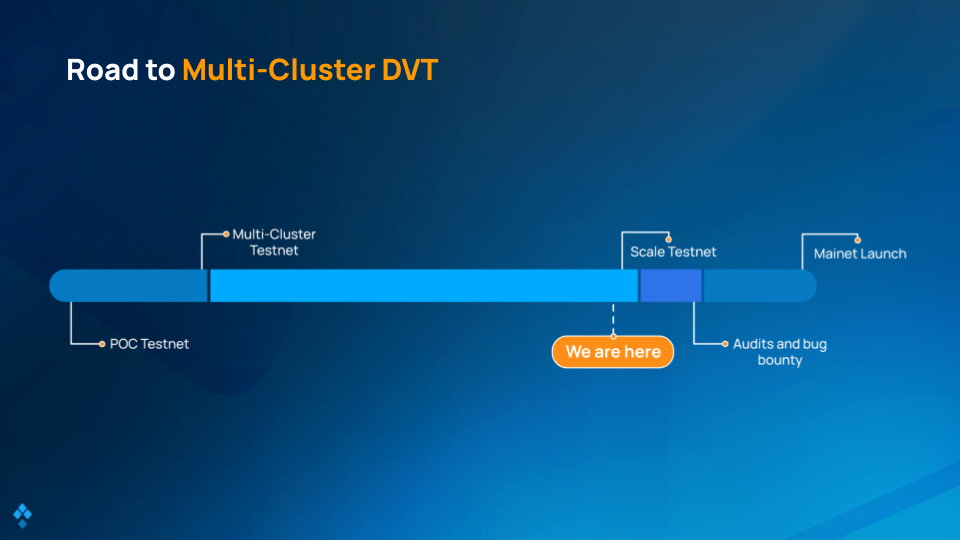Get Ready for Shifu V2 — Multi-Duty: Feb’ 2023
Explore the SSV network's Shifu V2 release - a major leap for Distributed Validator Technology, featuring full Beacon Chain duties support and node upgrades.

The ssv.network team is excited to announce the release of the latest version of the SSV node! Launching Shifu V2 is a significant milestone that builds on the completion and alignment of the official node specification. The upgraded SSV node now enables operators to conduct all the duties on the Beacon Chain, officially allowing the ssv.network nodes to participate in all duties used in Ethereum’s consensus. A first for DVT! (Distributed Validator Technology)
During the ssv.network’s public testnet, the core team spent 8 months working on the ssv node specification (also known as a spec). Having a spec for the SSV node allowed us to define clear goals, test those goals, and graduate to an implementation phase that will safely lead us to future development and interoperability of the network. This release is a major accomplishment for the ssv.network and will help us stride toward finalizing a mainnet candidate and create a robust and reliable DVT Network open to everyone. But to do that, we first need to implement some modifications to the node.
To give everyone a heads-up, the new changes to the node require a significant divergence from the existing code and will need us to pause the network for a short time and then reset it. By resetting the network this way, we can save time by not creating an entirely new testnet just for the node upgrade.
To ensure a smooth transition to the new testnet version, we will reset the network. The current testnet will be down for 2 weeks from the start of February and will be reset by the end of the period. We have allocated this time to allow network operators to update their node software to the latest version.
Note that the SSV web app and explorer interfaces will be down during this time.
This version includes the alignment of the ssv.network implementation to the formal technical specifications of the node, as well as support for all validator duties.
Operators have two weeks during the reset period to update their node software and move to the Shifu V2 testnet. Operators that don’t update to the latest version of the node will not be able to communicate with the live version and will continue operating on a depreciated network. Operators should note that when they have updated, their nodes will remain on standby for the 2-week period — meaning they are not part of any network. Only when the starting epoch commences will they continue operation on the new network.
Follow the instructions in this guide to update your operator node to the new version.
Stakers do not need to take any action other than monitoring their validators’ performance after the testnet reset. Suppose one of your managing operators did not participate in the update and remains inactive. In that case, you may replace them with an active operator once the platform resumes operation (can be seen when the explorer.ssv.network comes back online).
Follow the instructions in this guide to update your validator operators.
After starting R&D on DVT in 2019, we were able to launch the Primus V1 testnet later in 2021. It was a proof of concept only used to onboard the system and test the concept of a network of operator nodes as opposed to an isolated cluster. The core team spent the following 18 months testing and building our community, which inevitably led to the Shifu V1 release. Here we extensively tested the SSV token integration, smart contracts, networking, and all the new functionality we added for Shifu V1. After running for 5 months, the public Shifu V1 testnet is ready to level up to V2. Shifu V2 will have the same smart contracts, while the node is upgraded, enabling more efficient communication that finally supports the long-awaited block proposing along with the rest of the required duties that validators perform on the Beacon Chain.
As of this release, the ssv node has been aligned to the spec. From here, we will continue to test Shifu V2 until the team is sure the node is working as intended. The next step will be to rework the smart contracts to reduce the gas costs of using ssv.network. Following the smart contract cost optimization phase, we will officially be on the home stretch before reaching mainnet. After optimizing the contracts (contracts V3), all that’s left to do is bring everything together for the final version of the protocol and have it all audited before officially going live. Easier said than done, but this is the vision.

One of the ssv.network’s goals on the road to mainnet is to ensure that 67% of staked ETH stays in the hands of solo-stakers and services that use DVT. To ensure we reach this goal, we designed the protocol as a public good and have spent considerable time building and equipping the ssv.network community. Providing builders with a $50 million ecosystem fund and a bustling grants program to bring diverse DVT use cases to the masses.
We understand that this reset period may cause some inconvenience. However, it is a necessary step to ensure that the network operates smoothly and efficiently with the new version. We appreciate your understanding and look forward to your continued participation in the network.
Website | Network Hub | Discord | Dev Center | Documentation | GitHub